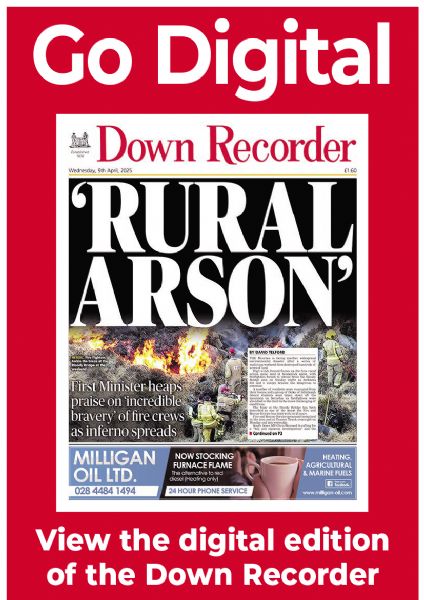Trust left ‘dismayed’
Trust left ‘dismayed’
16 April 2025
THE Mourne Heritage Trust says it is “dismayed” at the latest spate of landscape fires affecting the Mournes.
It insists a comprehensive, long term management structure for the area is required.
The environmental charity — which was established to protect and enhance the Mournes — said the scale of the damage caused by the most recent wildfires “appears to be at least as significant as any in living memory”.
Thanking the Fire and Rescue Service for its efforts to control the blazes, the charity said its small team has supported their efforts with specialist equipment and guidance in the challenging terrain and is only too aware of the resource challenges faced when dealing with this scale of incident.
The Trust said many people will know the areas affected, such as Bloody Bridge and Lough Shannagh, as among the area’s most loved mountain walks, with the land beyond the trails “hugely important for nature and natural ecosystem services”.
The area is designated a Special Area of Conservation for its upland heath habitat, ground nesting birds, small mammals, insects and other wildlife.
Charity officials say the most recent wildfires will expose the precious, carbon storing peat resource, leaving it vulnerable to being washed out.
They say that, in turn, this will affect reservoirs and increase the costs of water treatment.
“In order to maximise water quality and biodiversity, many of the affected areas are grazed by a consortium of local graziers, who will lose grazing land for some time to come,” the Trust reveals in a social media post.
“We hope that government will respond in proportion to the scale of the impacts by providing resource for the managed recovery that will be required to limit the long term damage and restore as much as possible of what has been lost.
“Moreover, wildfire prevention plan for the Mournes is long overdue, as is progress towards a comprehensive long term management structure for the high Mournes, commensurate in scale and influence with the importance of the natural assets and the pressures impacting upon them.”


